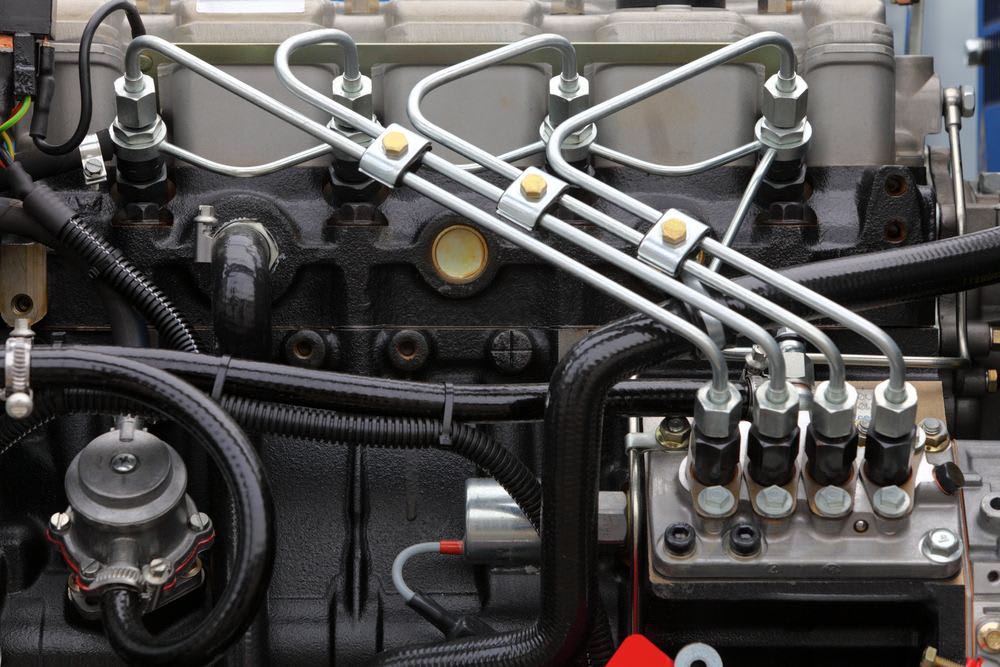

Cars have evolved a staggering amount over the last decade, and the biggest issue that manufacturers addressed with those advancements involves the amount of fuel used by the engine. Consequently, the fuel systems found in modern cars can get pretty complex. Luckily, the most complex ways vehicles save fuel involve programming in the ECU. Physically, there are only a handful of fuel system layouts to be found under the hoods of modern cars.
It starts at the pump
A car’s gas tank is responsible for holding the vast majority of the gas in the fuel system. This tank can be filled from the outside via a small hole that is sealed with a gas cap when not in use. The gas then goes through a few steps before it reaches the engine:
The gas first enters the fuel pump. The fuel pump is what physically pumps fuel out of the gas tank. Some vehicles have multiple fuel pumps (or even multiple gas tanks), but the system still works the same. The advantage to having multiple pumps is that fuel cannot slosh from one end of the tank to another when cornering or traveling on an incline and leave the fuel pumps dry. At least one pump will have fuel going to it at any given time.
The pump pushes gasoline into the fuel lines. There are hard metal fuel lines in most vehicles that run the fuel from the tank towards the engine. They are run along parts of the vehicle where they will not be too exposed to the elements and will not get too hot from the exhaust or other components.
Before it can get to the engine, the gas has to pass through the fuel filter. The fuel filter removes any impurities or debris from the gasoline before it gets into the engine. This is a very important step and a clean fuel filter is key to a long-lasting and clean-running engine.
Finally, the gas reaches the engine. But how does it get into the combustion chamber?
The wonders of fuel injection
For the majority of the 20th century, carburetors were responsible for taking gasoline and mixing it with the appropriate amount of air for ignition in the combustion chamber. A carburetor relies on the suction pressure created by the engine itself to draw in air. This air carries with it fuel that is also present in the carburetor. This relatively simple design works pretty well, but suffers when the demands of the engine differ at different RPMs. Because the throttle decides how much of the air/fuel mixture the carburetor lets into the engine, the fuel is introduced in a linear way, with more throttle equalling more fuel. If the engine needs 30% more fuel at 5,000 RPM than it does at 4,000 RPM, for instance, a carburetor would struggle to make it run smoothly.
Fuel injection systems
To solve this problem, fuel injection was created. Rather than letting the engine draw in gas via its own pressure alone, electronic fuel injection uses a fuel pressure regulator to keep a steady vacuum of pressure drawing fuel to fuel injectors that spray a mist of gas into the combustion chambers. There are single-point fuel injection systems that introduce gasoline into a throttle body mixed with air. This air/fuel mixture then enters all of the combustion chambers as needed. Direct fuel injection systems (also called port fuel injection) have injectors delivering fuel right into the individual combustion chambers and have at least one injector per cylinder.
Mechanical fuel injection
Just like with wrist watches, fuel injection can work electronically or mechanically. Mechanical fuel injection is not very popular nowadays, as it is higher-maintenance and takes longer to tune to a specific application. Mechanical fuel injection works by mechanically metering the amount of air going into the engine and the amount of fuel going into the injectors. This makes it more difficult to calibrate.
Electronic fuel injection
Electronic fuel injection can be programmed to work best for a certain use such as towing or drag racing, and this electronic tuning takes less time than mechanical fuel injection and doesn’t need to be re-tuned as much as a carbureted system.
Ultimately, the fuel system on modern cars is controlled by the ECU, like so many others. This is not a bad thing, though, because engine issues and other problems can be solved with a software update in some cases. On top of that, the electronic controls allow mechanics to pull up data from the engine simply and consistently. Electronic fuel injection provides consumers with better fuel mileage and more consistent performance all around.



